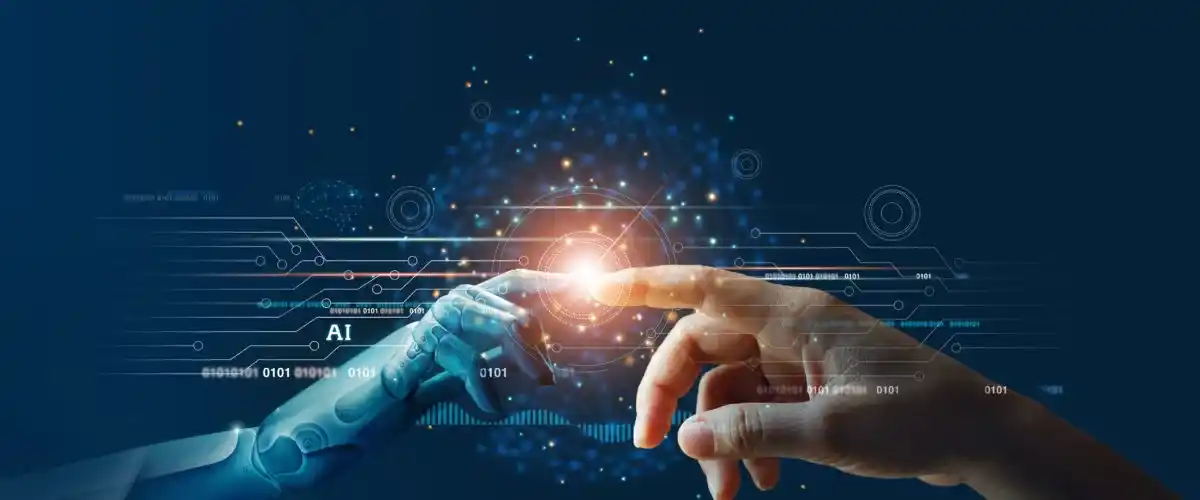Table of Contents
Organizational behavior is the study of how individuals, teams, and structures within an organization interact and function. It focuses on understanding human behavior at work to improve productivity, foster collaboration, and achieve organizational goals.
By analyzing aspects like leadership, motivation, communication, and team dynamics, companies can create better work environments. Effective organizational behavior helps businesses understand how people work together and how to shape policies, systems, and processes to create more efficient, innovative, and engaged workforces.
How is AI Improving Organizational Behavior?
Artificial Intelligence (AI) is revolutionizing the way organizations operate. From automating routine tasks to analyzing large volumes of data, AI enhances decision-making, improves communication, and fosters a culture of learning and development. By integrating AI into organizational behavior practices, companies are finding new ways to boost productivity, enhance employee satisfaction, and promote better leadership and teamwork.
AI Innovations Transforming Organizational Behavior
Here are 7 powerful AI innovations that are transforming organizational behavior:

1. AI-Powered Recruitment and Onboarding
Recruiting the right talent is essential for a company’s success. AI tools streamline recruitment by automating the screening process. These tools can analyze resumes, assess skills, and match candidates to job roles faster than manual processes. AI-driven platforms can also predict candidate success by analyzing past performance data, thereby improving hiring decisions.
AI doesn’t stop at hiring—it also enhances onboarding. Virtual assistants guide new employees through orientation, helping them access resources, learn company policies, and complete training modules. This reduces the workload on HR teams and ensures a smoother onboarding experience for new hires, ultimately leading to higher employee retention.
2. Enhanced Employee Engagement through AI Analytics
Employee engagement plays a critical role in organizational behavior. AI-driven analytics can gauge employee sentiment by analyzing emails, surveys, and feedback to understand the overall mood in the workplace. By identifying patterns in behavior and communication, AI helps leaders make informed decisions about employee well-being and engagement.
For example, AI can highlight areas where employees may feel disengaged, stressed, or unsupported. This allows companies to intervene early, provide support, and create a more positive work environment. Real-time data on engagement helps leaders promote better communication and improve work culture, which leads to higher productivity and employee satisfaction.
3. AI in Leadership Development
Leadership plays a vital role in shaping organizational behavior. AI tools are being used to help develop leadership skills by providing personalized feedback to managers and leaders. AI-powered platforms can assess communication styles, decision-making patterns, and emotional intelligence, offering insights that leaders can use to improve their management techniques.
With AI-driven leadership development programs, organizations can offer customized learning paths that enhance specific skills. These tools ensure that leaders are continuously evolving, which fosters a more adaptive and resilient organizational culture.
4. Smart Workforce Planning with AI
Workforce planning involves managing human resources effectively to meet organizational goals. AI can analyze workforce data, predict future needs, and suggest optimal staffing levels. This helps companies plan for talent shortages, skill gaps, or workforce shifts.
For example, AI can identify which employees may be at risk of leaving based on job satisfaction metrics or performance trends. By understanding these insights early, companies can take proactive measures to retain top talent and create development opportunities. AI also helps allocate resources more effectively, ensuring that teams are balanced and tasks are completed efficiently.
5. AI for Personalized Learning and Development
Continuous learning is critical for employee growth and organizational success. AI-powered platforms provide personalized learning experiences based on an employee’s role, career goals, and performance data. These systems can recommend relevant courses, training programs, and resources tailored to each individual.
Personalized learning increases employee motivation, enhances skills, and promotes career development. By using AI to foster learning, organizations create an environment of continuous improvement, where employees feel supported in their growth.
6. AI-Driven Conflict Resolution
Conflicts in the workplace can have a significant impact on organizational behavior. AI tools are being developed to assist in conflict resolution by identifying issues before they escalate. AI analyzes communication patterns, employee interactions, and feedback to detect potential sources of tension.

For example, AI can flag negative communication trends or highlight areas where misunderstandings may occur. Leaders can use this information to address conflicts early, fostering a more harmonious work environment. By resolving disputes quickly and efficiently, AI helps maintain a positive organizational culture.
7. Boosting Productivity with AI Automation
AI automation is transforming organizational behavior by reducing the time employees spend on repetitive tasks. Automating administrative tasks such as scheduling, data entry, and reporting frees up employees to focus on more strategic, creative work.
By using AI to handle routine activities, organizations can increase overall efficiency and productivity. Employees are more engaged when they can focus on meaningful tasks, and AI tools help streamline workflows, reduce errors, and improve time management.
Conclusion
AI innovations are transforming the way organizations operate, leading to more efficient, productive, and engaged workforces. From improving recruitment and leadership development to enhancing employee engagement and conflict resolution, AI is revolutionizing key aspects of organizational behavior. By adopting these powerful AI tools, companies can foster positive work environments, retain top talent, and stay competitive in a rapidly changing business landscape.
As AI continues to evolve, its impact on organizational behavior will only grow, offering new ways to support employees and drive organizational success.





